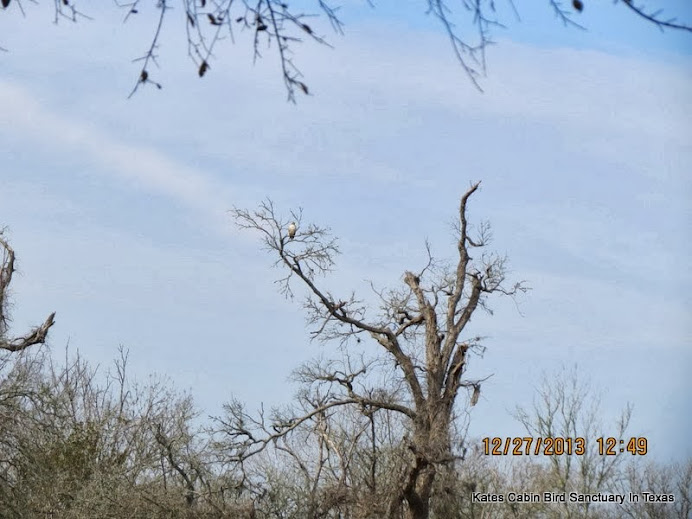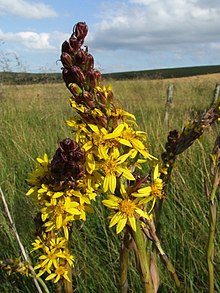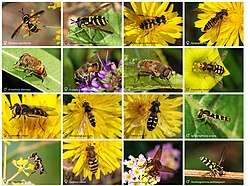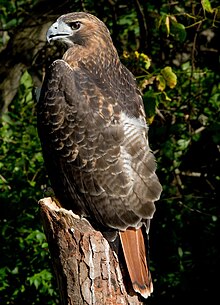
Hi Everybody!!
I am still sharing treasures from the roadtrip to the Prairie with the Bluebonnet Crew. This beautiful bird is a Red Tailed Hawk. (I had misidentified him as an Osprey, but someone on G+ steered me in the right direction.) Anyway, I also found a killdeer and one more mystery shore bird featured below with the links to the photostudies in my G+ Photo Albums. In keeping with our 'learn something new everyday' tradition, I have shared info excerpts from Wikipedia on tonight's treasures. Enjoy!

https://en.wikipedia.org/wiki/Red-tailed_Hawk
Red-tailed Hawk
From Wikipedia, the free encyclopedia
| Red-tailed Hawk | |
|---|---|
 | |
| Conservation status | |
| Scientific classification | |
| Kingdom: | Animalia |
| Phylum: | Chordata |
| Class: | Aves |
| Order: | Falconiformes (or Accipitriformes, q.v.) |
| Family: | Accipitridae |
| Genus: | Buteo |
| Species: | B. jamaicensis |
Description[edit]
A male Red-Tailed Hawk may weigh from 690 to 1,300 g (24 to 46 oz), with a mean weight of 1,030 g (36 oz), and measure 45–60 cm (18–24 in). A female can weigh between 900 and 2,000 g (32 and 71 oz), averaging 1,220 g (43 oz), and measure 48 to 65 cm (19 to 26 in) long. The wingspan can range from 105 to 141 cm (41 to 56 in) and, in the standard scientific method of measuring wing size, the wing bone is 33–44 cm (13–17 in) long. The tail measures 19–25 cm (7.5–9.8 in) in length.[4][5][6] The exposed culmen was reported to average 2.5–2.7 cm (0.98–1.1 in) and the tarsus averaged 8.6–9 cm (3.4–3.5 in).[7] As is the case with many raptors the Red-tailed Hawk displays sexual dimorphism in size, as females are up to 25% larger than males.[8]
Red-tailed Hawk plumage can be variable, depending on the subspecies and the region. These color variations are morphs, and are not related to molting. The western North American population, B. j. calurus, is the most variable subspecies and has three color morphs: light, dark, and intermediate or rufus. The dark and intermediate morphs constitute 10–20% of the population.[9]
Though the markings and hue vary across the subspecies, the basic appearance of the Red-tailed Hawk is consistent. Overall, this species is blocky and broad in shape, often appearing (and being) heavier than other Buteos of similar length.[4] A whitish underbelly with a dark brown band across the belly, formed by horizontal streaks in feather patterning, is present in most color variations. Especially in younger birds, the underside may be otherwise covered with dark brown spotting. The red tail, which gives this species its name, is uniformly brick-red above and light buff-orange below.[4][10] The bill is short and dark, in the hooked shape characteristic of raptors, and the head can sometimes appear small in size against the thick body frame.[4] They have a relatively short, broad tails and thick, chunky wings.[10] The cere, the legs, and the feet of the Red-tailed Hawk are all yellow.[8]
Immature birds can be readily identified at close range by their yellowish irises. As the bird attains full maturity over the course of 3–4 years, the iris slowly darkens into a reddish-brown hue. In both the light and dark morphs, the tail of the immature Red-tailed Hawk are patterned with numerous darker bars.[10]
(Please see link for more info)
link to photostudy in album:
https://plus.google.com/u/0/photos/117645114459863049265/albums/5962712326476196977

Killdeer

https://en.wikipedia.org/wiki/Killdeer
Killdeer
From Wikipedia, the free encyclopedia
The Killdeer (Charadrius vociferus) is a medium-sized plover.
The adults have a brown back and wings, a white belly, and a white breast with two black bands. The rump is tawny orange. The face and cap are brown with a white forehead. The eyering orange-red. The chicks are patterned almost identically to the adults, and areprecocial — able to move around immediately after hatching. The Killdeer frequently uses a"broken wing act" to distract predators from the nest. It is named onomatopoeically after its call.[2]
| Killdeer | |
|---|---|
 | |
| Conservation status | |
| Scientific classification | |
| Kingdom: | Animalia |
| Phylum: | Chordata |
| Class: | Aves |
| Order: | Charadriiformes |
| Family: | Charadriidae |
| Genus: | Charadrius |
| Species: | C. vociferus |
Behavior[edit]
They are migratory in northern areas and winter as far south as northern South America. They are rare vagrants to western Europe, usually late in the year.
These birds forage for food in fields, mudflats, and shores, usually by sight. They mainly eat insects.
Their name comes from their frequently heard call. These birds will frequently use adistraction display ("broken-wing act") to distract predators from their nests. This involves the bird walking away from its nesting area holding its wing in a position that simulates an injury and then flapping around on the ground emitting a distress call. The predators then think they have easy prey and are attracted to this seemingly injured bird and away from the nest. If the parent sees that a potential predator is not following them, they will move closer and get louder until they get the attention of the predator. This is repeated until the predator is far from the nest, and the killdeer suddenly "heals" and flies away.[5][7]
Their ability to exploit a wide range of agricultural and semi-urban habitat has helped keep them common and widespread in their range.

link to album photostudy:
https://plus.google.com/u/0/photos/117645114459863049265/albums/5962704526558853313

Mystery Bird
Is a mystery to me! I think he is a juvenile heron because of his spots. If anyone knows, please leave comment. He is very cute.







link to photostudy in album:
https://plus.google.com/u/0/photos/117645114459863049265/albums/5962713716734700849


https://en.wikipedia.org/wiki/Ligularia
Ligularia
From Wikipedia, the free encyclopedia
Ligularia (leopard plant) is a genus of robust Old World herbaceous perennial plants in the family Asteraceae.[4] They have yellow or orange composite flower heads with brown or yellow central disc florets, and are native to damp habitats mostly in central and eastern Asia, with a few species from Europe.[5] There are about 120[6] to 140 species in the genus, and over half are endemic to China.[7] The name Ligularia, from the Latin for "strap", refers to the shape of the ray florets.[8]
Some species are cultivated as ornamentals. The cultivars 'Gregynog Gold'[9] and 'The Rocket'[10] have gained the Royal Horticultural Society's Award of Garden Merit.
| Ligularia | |
|---|---|
 | |
| Ligularia sibirica | |
| Scientific classification | |
| Kingdom: | Plantae |
| (unranked): | Angiosperms |
| (unranked): | Eudicots |
| (unranked): | Asterids |
| Order: | Asterales |
| Family: | Asteraceae |
| Tribe: | Senecioneae |
| Genus: | Ligularia Cass. (1816) |

https://en.wikipedia.org/wiki/Hoverfly
Hoverfly
From Wikipedia, the free encyclopedia
Hoverflies, sometimes called flower flies or syrphid flies, make up the insectfamily Syrphidae. As their common name suggests, they are often seen hovering or nectaring at flowers; the adults of many species feed mainly on nectar and pollen, while the larvae (maggots) eat a wide range of foods. In some species, the larvae aresaprotrophs, eating decaying plant and animal matter in the soil or in ponds and streams. In other species, the larvae are insectivores and prey on aphids, thrips, and other plant-sucking insects.
Aphids alone cause tens of millions of dollars of damage to crops worldwide every year; because of this, aphidophagous hoverflies are being recognized as importantnatural enemies of pests, and potential agents for use in biological control. Some adult syrphid flies are important pollinators.
About 6,000 species in 200 genera have been described. Hoverflies are common throughout the world and can be found on all continents except Antarctica. Hoverflies are harmless to most other animals despite their mimicry of more dangerous waspsand bees, which serves to ward off predators.
| Syrphidae | |
|---|---|
 | |
| Sixteen different species of hoverfly | |
| Scientific classification | |
| Kingdom: | Animalia |
| Phylum: | Arthropoda |
| Class: | Insecta |
| Order: | Diptera |
| Suborder: | Brachycera |
| Section: | Aschiza |
| Superfamily: | Syrphoidea |
| Family: | Syrphidae Latreille, 1802 |

link to photstudy in album:
https://plus.google.com/u/0/photos/117645114459863049265/albums/5962714944990419681

...this is brendasue signing off from Rainbow Creek. See You next time!
Honeybee!

O+O



No comments:
Post a Comment
Hi Everybody! Please say hello and follow so I know you are here! Due to the inconsideration of people trying to put commercials on my blog comment area, I have restricted use of anonymous posts. Sorry that some hurt all.
My public email is katescabin@gmail.com No spammers or trolls